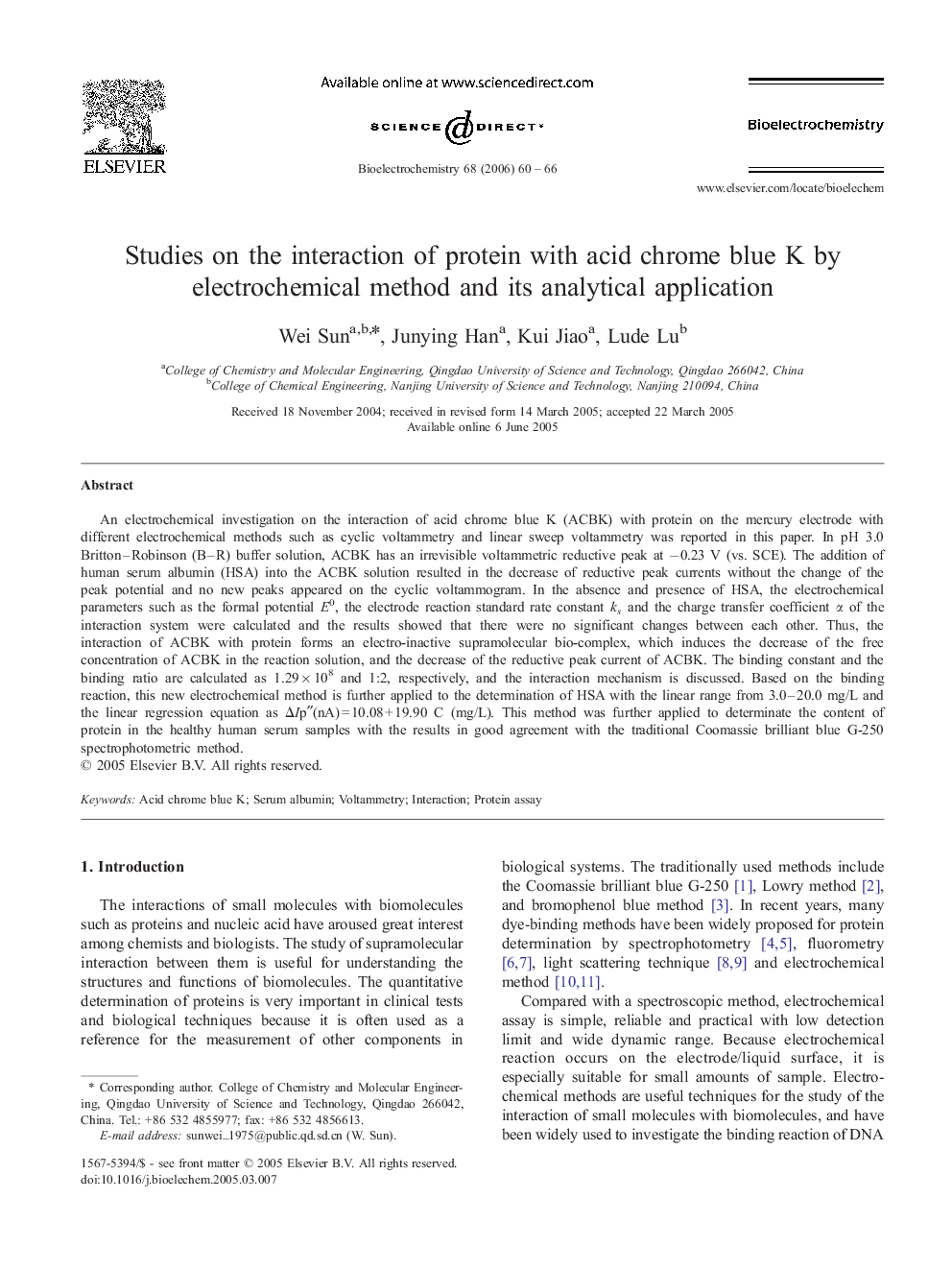| Article ID | Journal | Published Year | Pages | File Type |
|---|---|---|---|---|
| 1272754 | Bioelectrochemistry | 2006 | 7 Pages |
An electrochemical investigation on the interaction of acid chrome blue K (ACBK) with protein on the mercury electrode with different electrochemical methods such as cyclic voltammetry and linear sweep voltammetry was reported in this paper. In pH 3.0 Britton–Robinson (B–R) buffer solution, ACBK has an irrevisible voltammetric reductive peak at − 0.23 V (vs. SCE). The addition of human serum albumin (HSA) into the ACBK solution resulted in the decrease of reductive peak currents without the change of the peak potential and no new peaks appeared on the cyclic voltammogram. In the absence and presence of HSA, the electrochemical parameters such as the formal potential E0, the electrode reaction standard rate constant ks and the charge transfer coefficient α of the interaction system were calculated and the results showed that there were no significant changes between each other. Thus, the interaction of ACBK with protein forms an electro-inactive supramolecular bio-complex, which induces the decrease of the free concentration of ACBK in the reaction solution, and the decrease of the reductive peak current of ACBK. The binding constant and the binding ratio are calculated as 1.29 × 108 and 1:2, respectively, and the interaction mechanism is discussed. Based on the binding reaction, this new electrochemical method is further applied to the determination of HSA with the linear range from 3.0–20.0 mg/L and the linear regression equation as ΔIpʺ(nA) = 10.08 + 19.90 C (mg/L). This method was further applied to determinate the content of protein in the healthy human serum samples with the results in good agreement with the traditional Coomassie brilliant blue G-250 spectrophotometric method.
